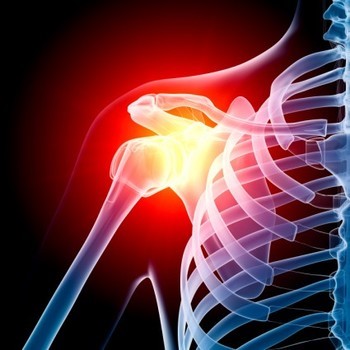Frozen Shoulder
Adhesive Capsulitis is one of the most frustrating diagnosis’ to deal with from an orthopedic physical therapy standpoint. Throughout my twenty years in practice, when I see this prescription, I know that the patient and I are in for a truly hard rehab process that may wind up down so many paths….
Frozen Shoulder or Adhesive Capsulitis is a condition that’s cause is unknown. Some say its origin is in an autoimmune response but to date, no one is really sure how or why this response happens to the shoulder joint proper. It can occur after a sickness, cold or flu. It can happen after a traumatic injury or simply after a fall on the shoulder or on an outstretched arm.
What typically happens is the body responds by laying down overabundance of scar tissue rendering the joint immovable in all its normal planes of motion. External rotation has only a few degrees, the mechanics of the arm are not congruent to normal rhythms and usually flexion proves to have major compensations.
Abduction simply causes pain, extension and internal rotation usually hurt at end range and many people have co morbidities like bicep tendon, labral and or rotator cuff pathology. This makes it even harder to not only figure out where the true pain is coming from and what to treat first!
From a Physical Therapy standpoint, I have found to have to treat each case on an individual basis. Sometimes I even tell the patient to take some of their medically prescribed pain or anti-inflammatory meds during our session. The physical agent of choice for me is moist heat for 20-30 minutes.
Infa-Red lamps also work well if situated properly for the same amount of time. I try to heat the scapula-thoracic joint as well as the gleno-humeral joint. I believe in TERTS (total end range time training systems-4x/daily for each motion), vibrations in numerous mobilization positions, laser to all the major restrictions in both muscle and joint, classical scapular and humeral mobs in all planes and ALL ANGLES, and finally, therapeutic exercise.
Three simple exercise I usually use are the strong man press, the row/sawing exercise and the archers exercise (see below for positions). I like the strongman position because it allows a bit of cheating with opposite side-bending. Although not the ideal position, I have found it gives decent positioning for neuromuscular recruitment and most of all, the confidence to one day be able to reach over head. Concurrently, this position can be very functional.
One must understand the limitations of this exercise. The other exercise I like, works many of the muscles of the scapulo-thoracic joint in multiple positions. These are the Row/Saw and Drawing the bow. They are also great for a home exercise program and to keep the joint moving and continued synovial lubrication.
Strong man press Rowing/Saw position Drawing the bow
I can see within the first month of treatment if we are going to make progress or not. If for whatever reason I do not see progress or the right patterns forming I will refer back to the patient’s physician. From a medical standpoint this is what the patient has in store. A steroid shot, arthrographic distension, supra-scapular nerve block or manipulation under anesthesia (MUA).
This is all I have seen MD’S and DO’s perform when there is no other option in PT and the patient is limited mentally and physically. For a deeper look at the medical approach, there is a ton of research out there and numerous articles all over the web.
My program is usually successful if both the patient and therapist meet 3X a week for 8 weeks and there is a true trust and connection. It’s a commitment for both involved but one of the most rewarding.

